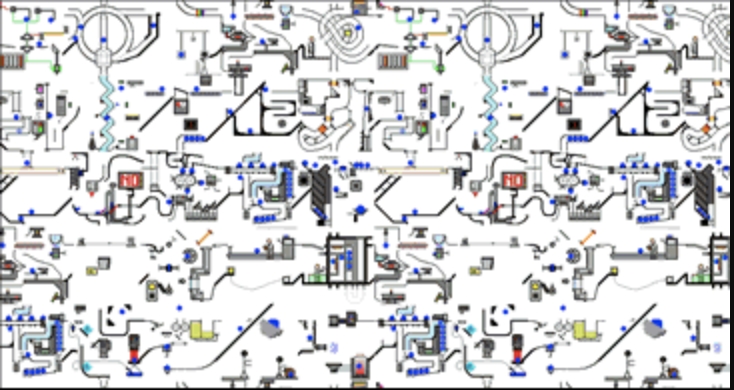Sleep is big business—or, more rightly, not sleeping is. Seemingly overnight, a multibillion dollar industry has sprung up. A 2017 McKinsey report estimates the market to be worth in the neighborhood of 40 billion dollars, growing more than 8% per year.
As someone who suffers from a severe sleep issue, that’s encouraging news. At a minimum, the glut of high-tech devices and mindful meditation apps raises basic awareness that sleep deprivation is a problem of epidemic scale.
Fortunately, too, most of the products are rooted in sound sleep hygiene. The army of apps that can be downloaded generally all point toward the destination of calm—one of the most popular even carries that name. Perhaps even physicians could benefit from such awareness. I learned the hard way that my former primary doctor was relying on a decades-old cliché about sleep apnea.
Even so, all the weighted blankets and binaural beats soundtracks in the world won’t cure you if you suffer from a sleep issue that requires medical attention. In fact, relying on them can delay getting professional care, which is what happened with me. Instead of setting up an appointment, my wife and I drove halfway across the county in search of an herb named skullcap. When that didn’t pan out, it was acupuncture. Then pharmaceutical grade melatonin in exceedingly high doses. Someone mentioned cannabis edibles. For months this went on. We were up for anything and my life went to hell for a while.
Despite this recent heightened national awareness about sleep, one basic fact continues to be obscured by the mountain of sleep products: two consecutive days without sleep is deemed a crisis by experts. For many, the natural sleep driver mechanism eventually kicks in and they once again march to the beat of their circadian rhythms. For the unlucky minority, however, two days of unremitting wakefulness is sufficient time for the ancillary fallout of anxiety and stress to take root, which can often bloom into full-blown, withering insomnia.
If the problem persists, a doctor is a better bet than another product—and hopefully that professional knows more about sleep than my former physician. In some instances, the purported breakthrough can actually worsen the circumstance. Heavy blankets are designed to act like a reassuring hug, quieting the busy mind in order to surrender to sleep. All well and good, but if you suffer from sleep apnea, fifteen pounds of bedding can further obstruct breathing passages, causing a potentially lethal situation for individuals unaware they have the condition.
Most of the products are harmless, except, lamentably, for the fringes of the sleep apnea market, where a collection of modern-day snake oil salesmen have set up shop. Their products can often be found in fractional ads in the back of magazines, touting wares, such as nasal adhesive strips and chinstraps, that miraculously cure apnea and make the standard treatment of a nighttime continuous positive air pressure (CPAP) machine obsolete.
It’s a cynical and money-grubbing pitch for a number of reasons. The hawkers of such products are capitalizing on the fact that nobody enjoys the prescription of having to sleep wearing a mask hooked up to a machine for the rest of their lives. While it’s true, the future promises revolutionary technology for sleep apnea patients, nothing has been approved by the FDA. Amid the marketing blather of cures, CPAP continues to be the gold standard of treatment. The only cure for the condition is tracheotomy, which suggests perhaps the FDA should disapprove of companies claiming cures of their own.
As with most trending industries, the sleep gizmo market is operating with a predictable gold rush mentality. Everyone has an incredible claim, but only the very few pan out, much like the high-tech industry, where both innovators and shysters abound. Except sleep is something that directly impacts public health, sometimes on a grand scale. The most catastrophic industrial accidents of the last fifty years—Three Mile Island, Bhopal, Chernobyl—have been due to sleep deprivation.
The good news, of course, is that people finally are waking up to the dangers of not sleeping, although the marketplace traditionally hasn’t been the straightest avenue for furthering public awareness. Sleep is a little like sex education. The best place to learn about it isn’t on the streets. Rather, good sleep hygiene begins at home and should be part of the school curriculum.
I have to admit it’s fun to peruse all the techy sleep trackers now available on the market, but the true state of the art has actually been around for decades, the sleep test, or polysomnography, an overnight data mapping that provides an eight-hour snapshot of a person’s sleep, detailing each stage in one remarkable report. Granted, it might not be as au courant as a heavy blanket, but it’s as close to infallible as we presently have. You just have to get wired up like a science experiment for one night, not as bad as it sounds. That’s just the way sleep is. Like most things worthwhile, you have to work hard and earn it, rather buy it at a store.



